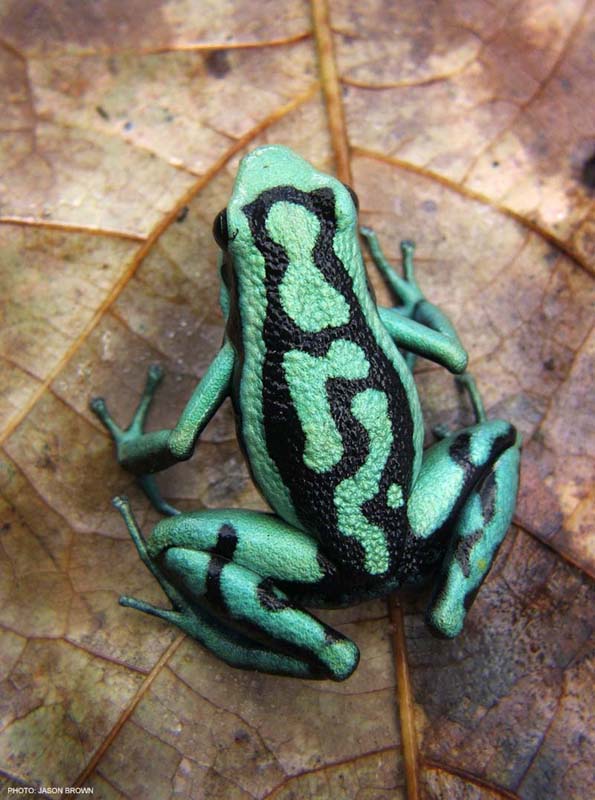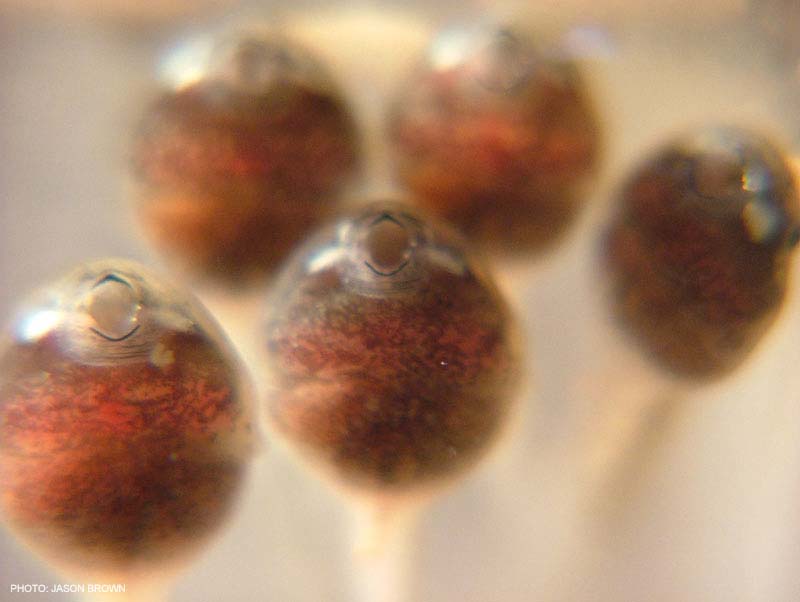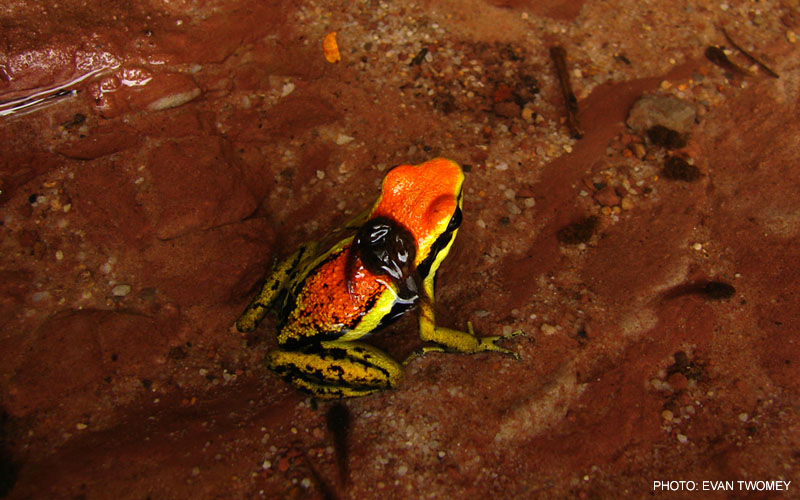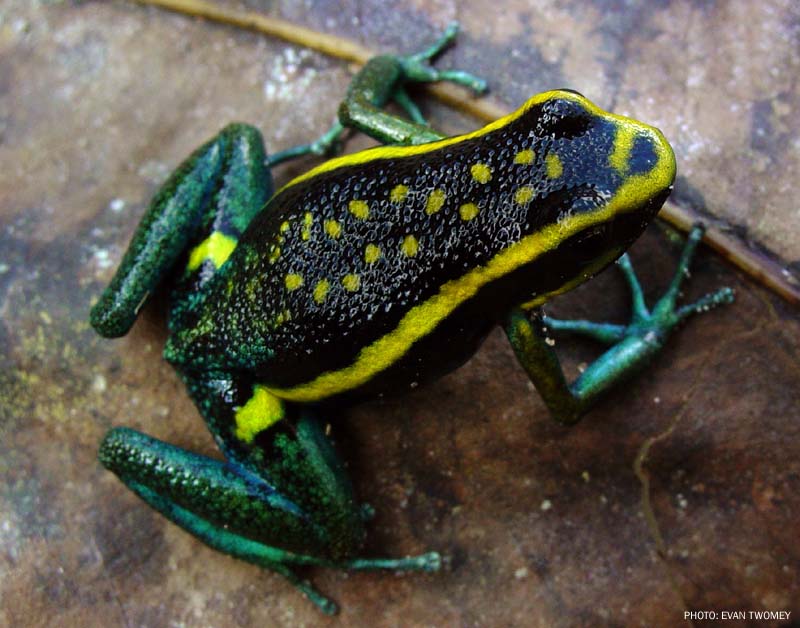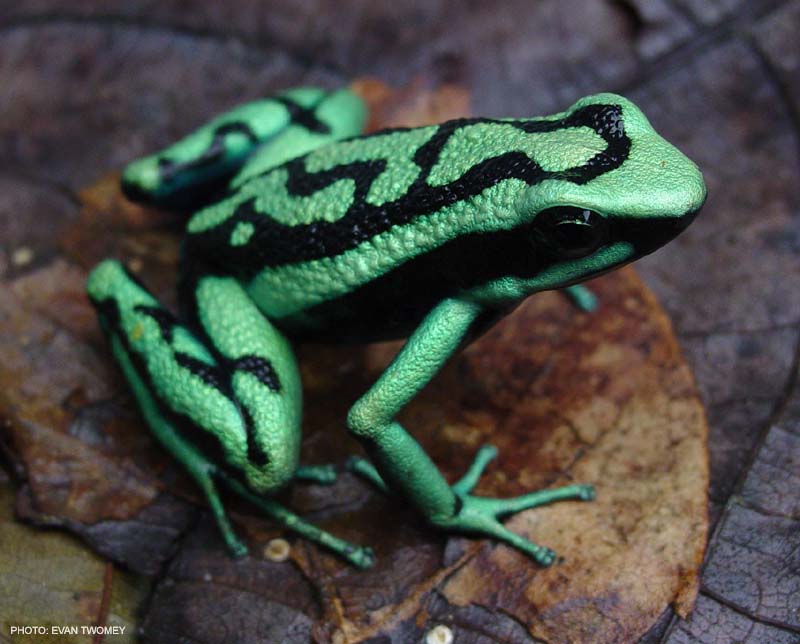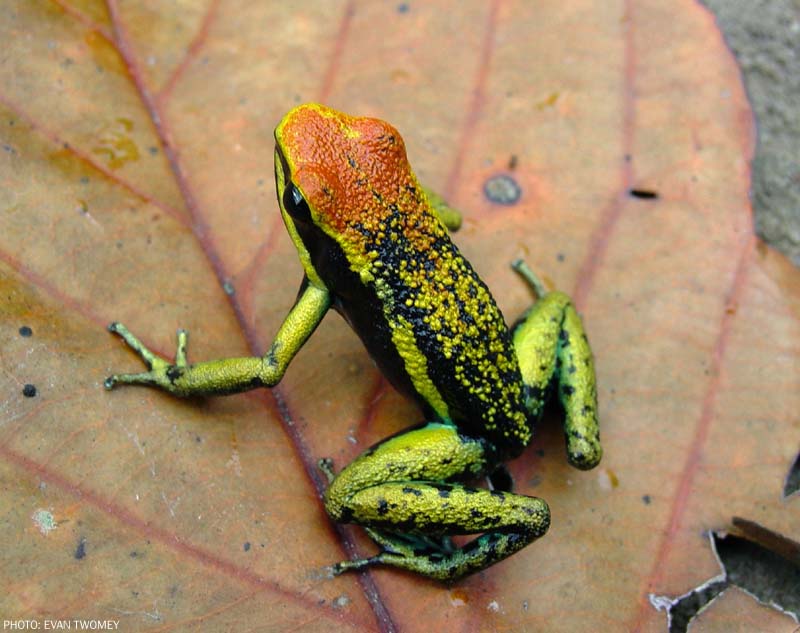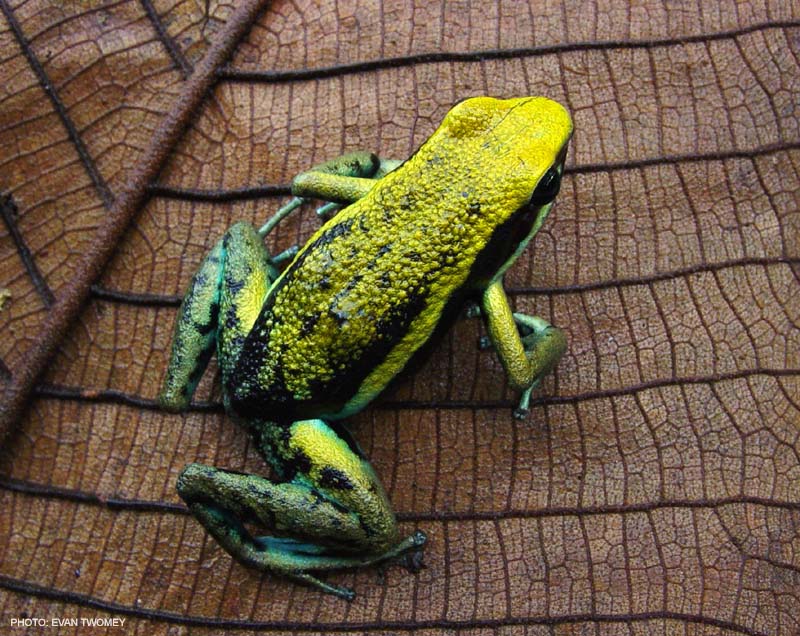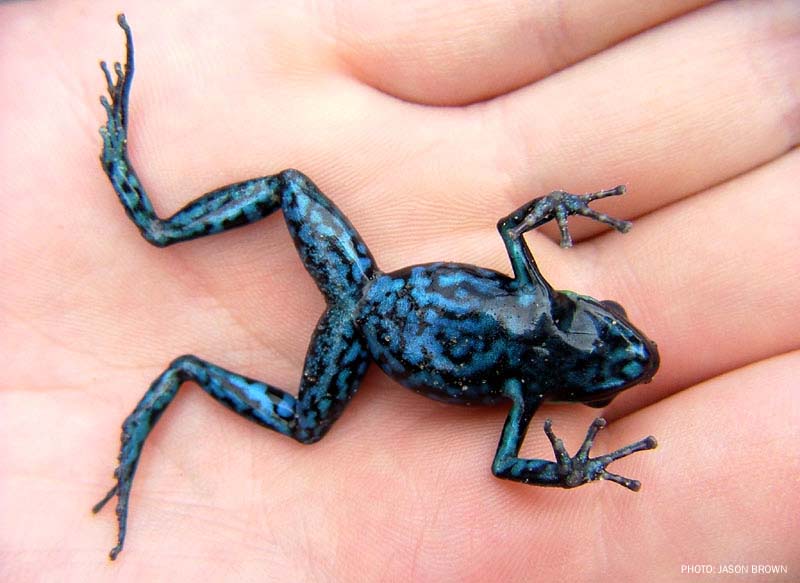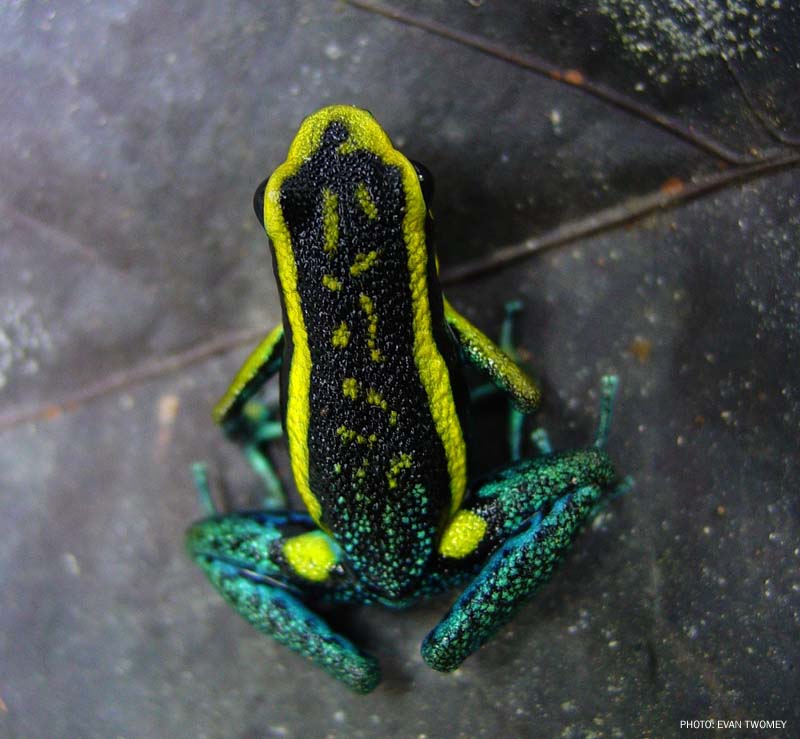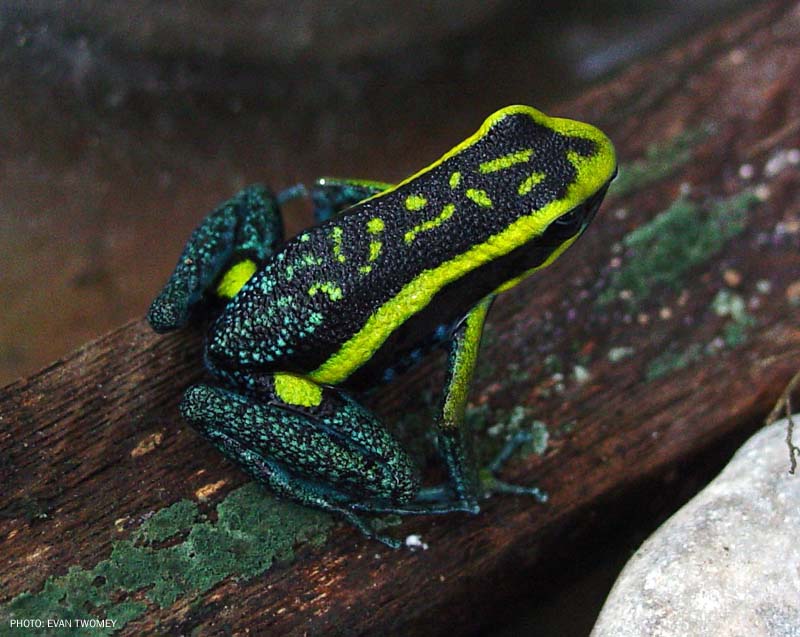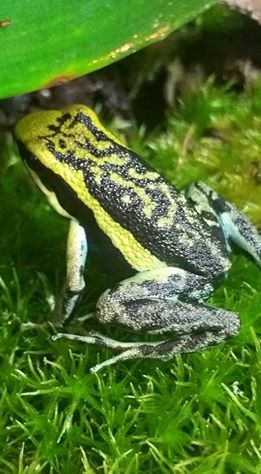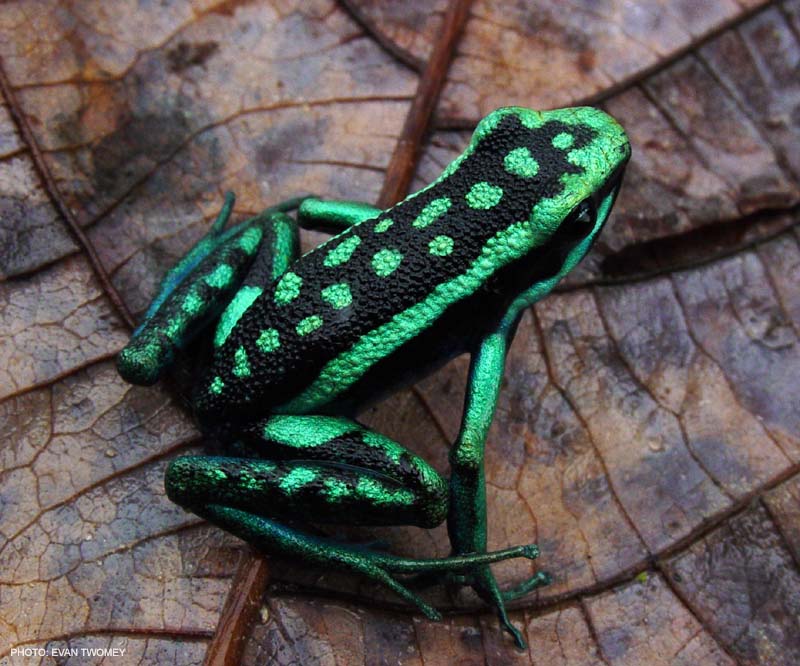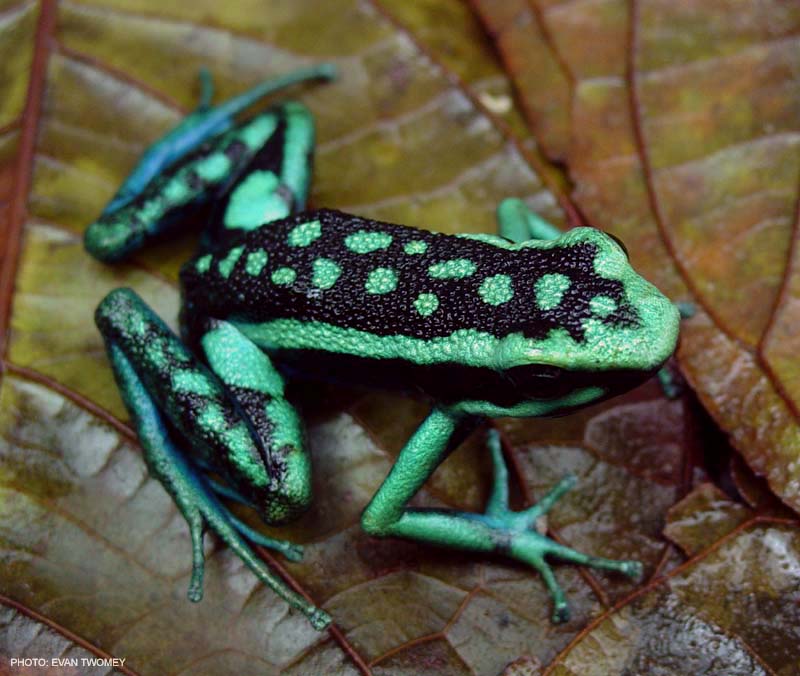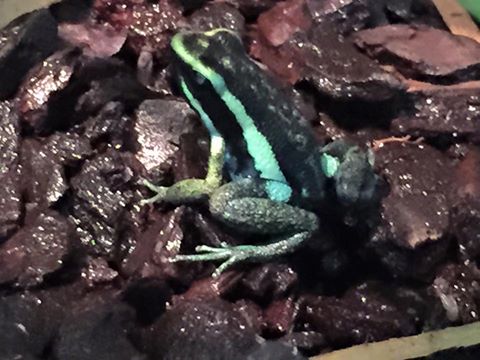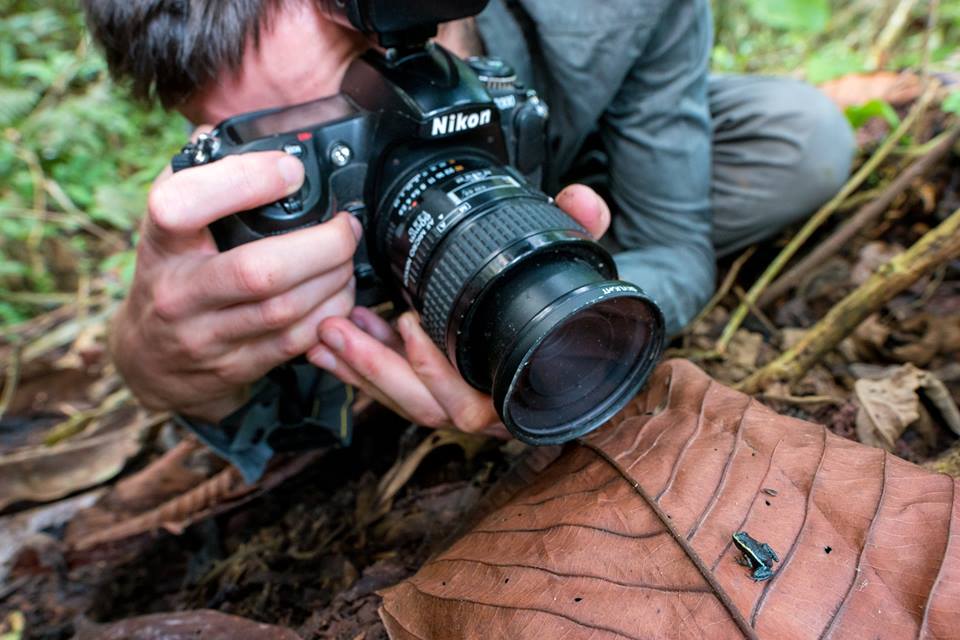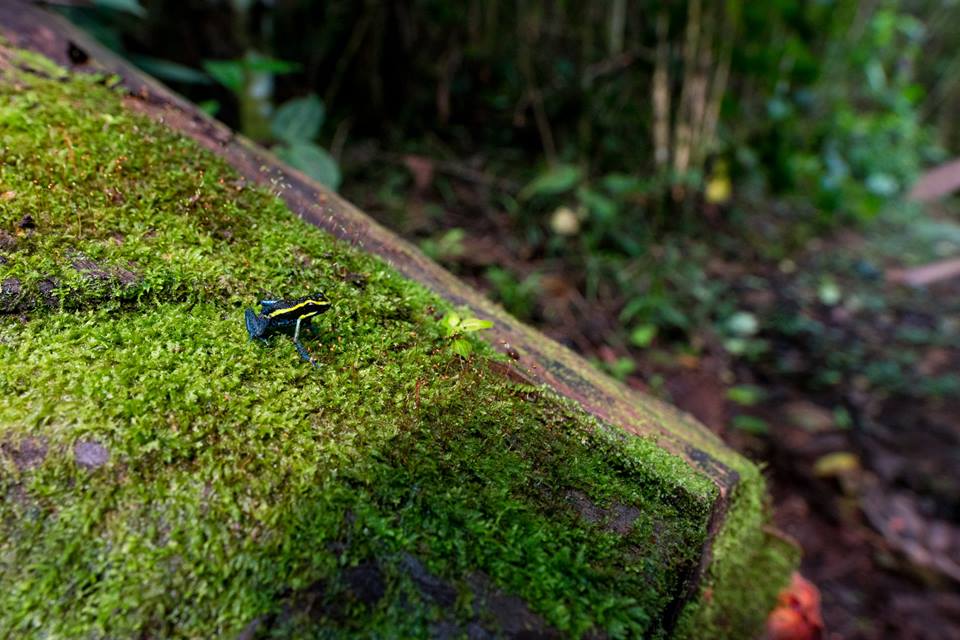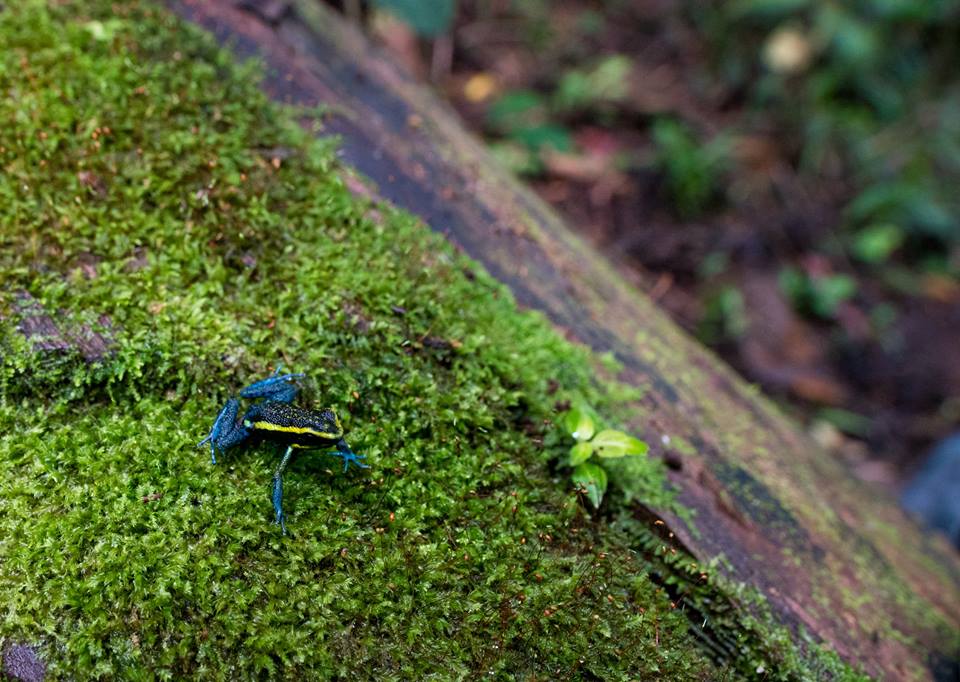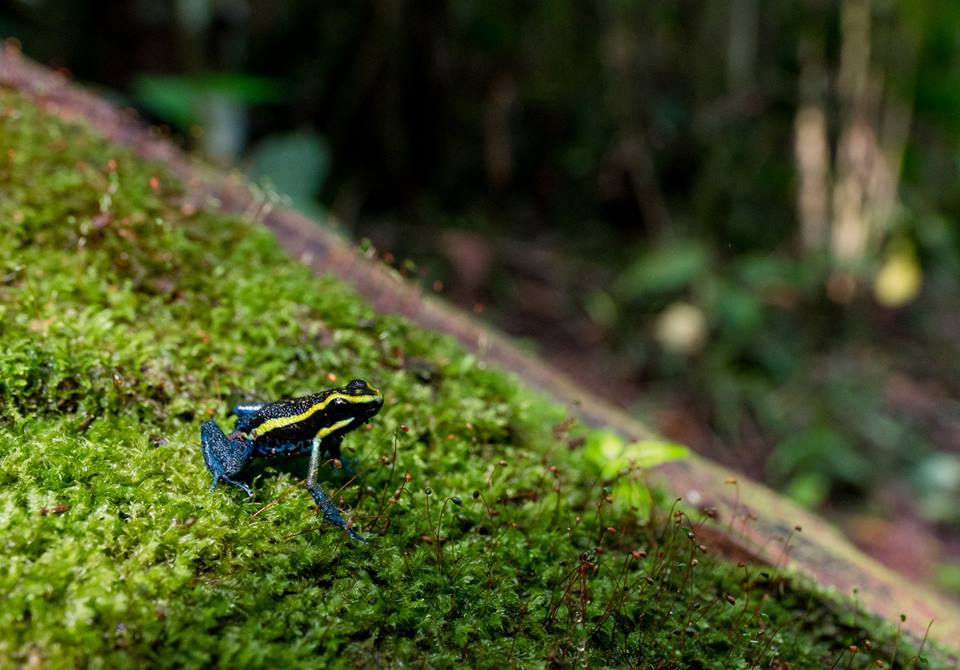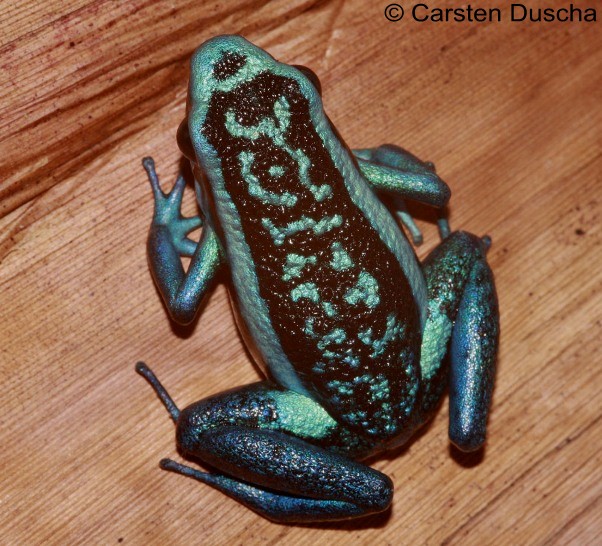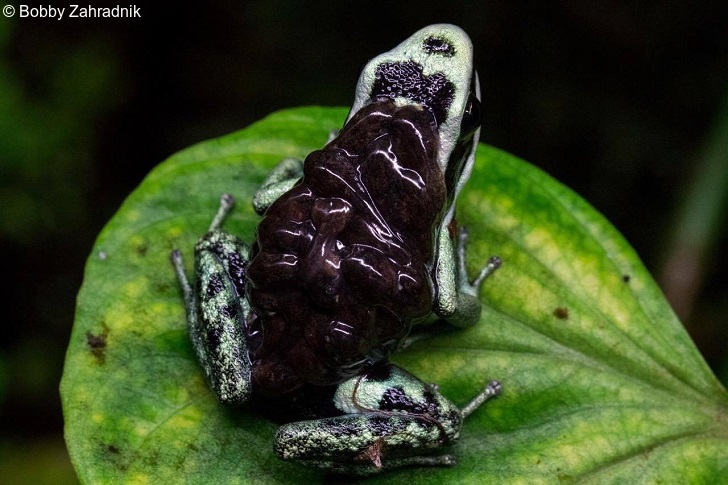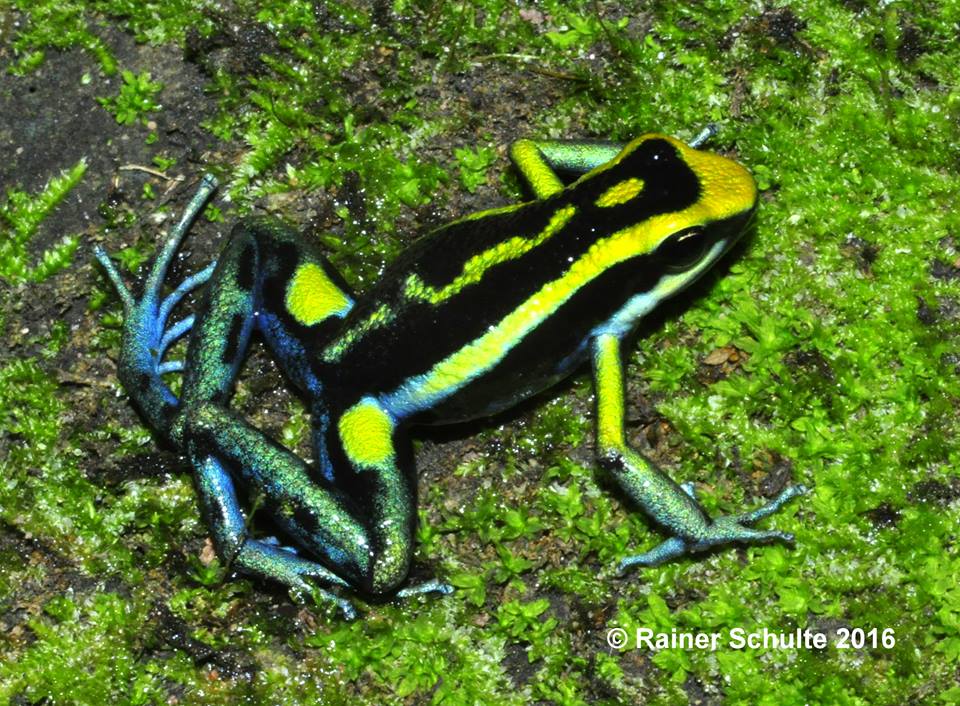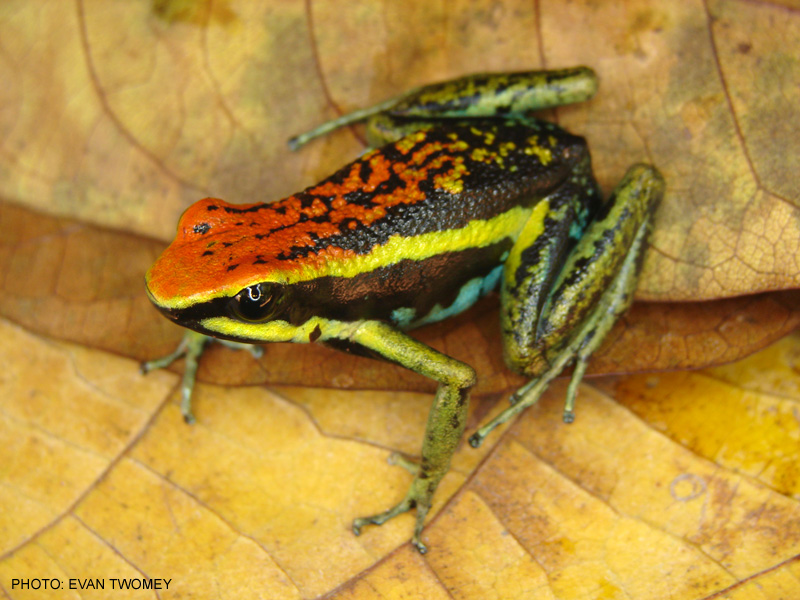 AMEEREGA BASSLERI
AMEEREGA BASSLERI
(Melin, 1941)
La Pleasing Poison Frog o Rana velenosa (Ameerega bassleri; precedentemente Epipedobates bassleri) è una specie di rana nel Dendrobatidae.
CLASSIFICAZIONE SCIENTIFICA
Regno Animalia
Phylum Chordata
Classe Amphibia
Ordine Anura
Famiglia Dendrobatidae
Genere Ameerega
Specie A. bassleri
NOME BINOMINALE
Ameerega bassleri
(Melin, 1941)
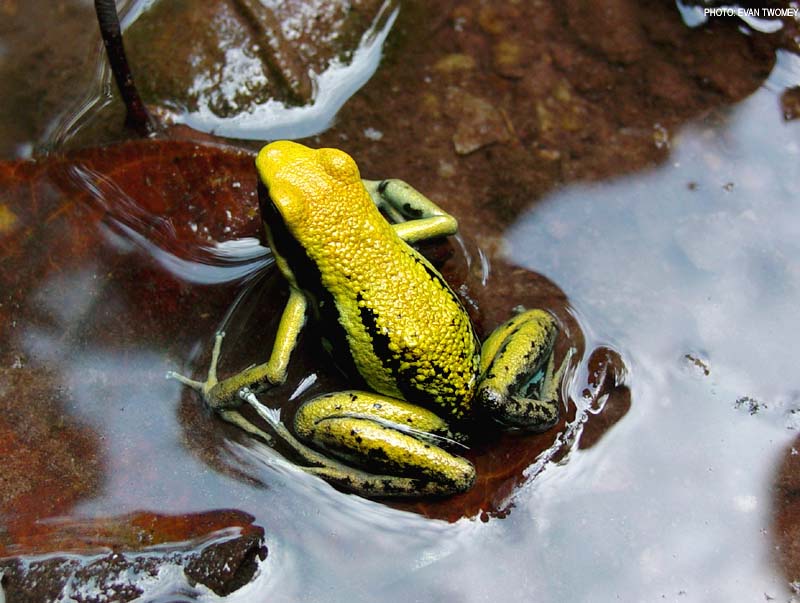
SINONIMI
Epipedobates bassleri Melin, 1941
NOME COMUNE INGLESE
Pleasing Poison Frog
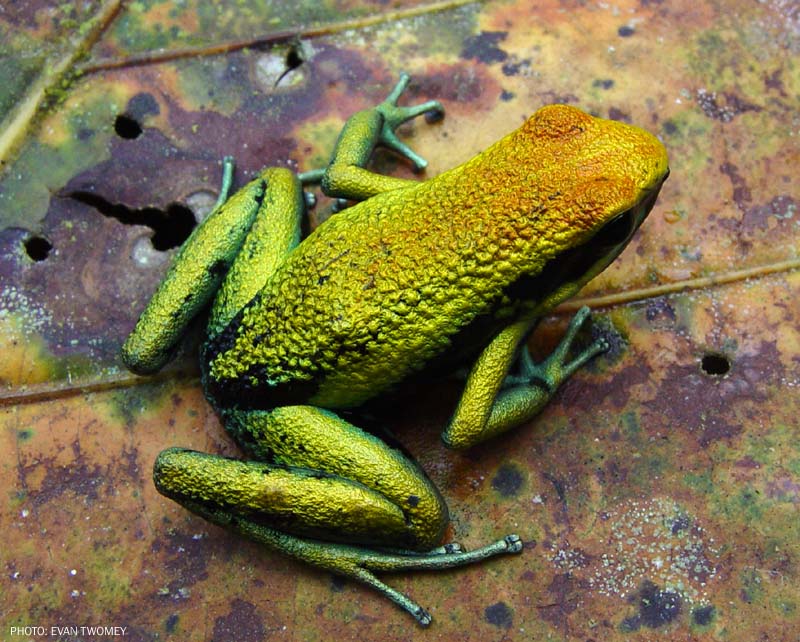
DIFFUSIONE
Questa grande specie è endemica del Perù, nella parte centrale e settentrionale della provincia di San Martin, a quote comprese tra 500 e 1200 m. s.l.m. La sua diffusione è limitata alla catena montuosa della Cordigliera Orientale vicino a Tarapoto e nella Huallaga River Valley, parte centrale.
HABITAT
Si tratta di specie montane diurne che preferiscono vivere ai lati di piccoli corsi d’acqua, ruscelli montani rocciosi e torrenti. A quote più basse, queste rane si rinvengono solo nelle tasche umide che circondano i piccoli corsi d’acqua mentre negli altopiani di possono rinvenire un po’ ovunque.

RIPRODUZIONE
I girini sono depositati in piccoli fossi o stagni vicino ai corsi d’acqua ma mai in acqua corrente.

ALLEVAMENTO IN CATTIVITA’
A.bassleri si adatta molto bene alla vita in cattività. Essendo una delle specie più grandi di Ameerega, sono capaci di grandi salti, ma non sono così “nervose”, come trivittata, e dovrebbe essere fornito loro un terrario relativamente spazioso . Anche se strettamente associata con l’acqua in natura, l’acqua corrente nel terrario non è obbligatoria ma rimane pur sempre una cosa utile. Una dieta varia e buona illuminazione aiuterà queste rane raggiungere il loro pieno potenziale.
STATO DI CONSERVAZIONE
La situazione delle popolazioni di questa specie in natura varia tra i vari morph. Alcuni, come il morph nominale, si trovano in gran numero a più di 600 metri di altitudine. Al contrario, il morph verde cromo è in pericolo di estinzione ed i suoi habitat naturali rimangono molto pochi.
Altre popolazioni rientrano riserve comunali e parchi nazionali, e quindi godano un certo grado di protezione.
In tutti i casi, A. bassleri ha una gamma ristretta di popolazioni a causa delle sua dipendenza da ambienti “freddi”. Fortunatamente il contrabbando non è stato un aspetto significativo per questa specie. Alcuni morph, come appunto il verde cromo non avrebbero potuto sopportare anche un suo prelievo incontrollato da parte di contrabbandieri.
ALCUNI MORPH DI AMEEREGA BASSLERI
Tarapoto morph
La metamorfosi nominale abita gran parte della Cordigliera Orientale e parte della Cordillera Azul in prossimità di Tarapoto.
Morph Giallo e nero
Questo morph può essere trovato a ridosso di una catena montuosa a sud ovest di Tarapoto. Le femmine di questo morph si pensa che possano possedere un minor numero di macchie dorsali rispetto ai maschi. Questo deve ancora essere confermato, ma se fosse vero, potrebbe essere un altro esempio di selezione sessuale nella famiglia dei Dendrobatidi.
Chrome-verde morph
Questo morph è stato trovato in una spedizione del 2005 in una località a circa 1100m. La missione si è conclusa con una quasi sconfitta, infatti dopo un passaggio tortuoso attraverso un campo incolto di caffè pieno di spine, viti, tronchi, e bastoncini di lancia collocati in posizione strategica un cercatore è stato quasi ucciso. Tuttavia, dopo altre 5 ore sotto la pioggia, e con l’aiuto di una guida straordinaria di nome Junior, siamo riusciti a imbattersi in alcuni individui, che si sono dimostrati altrettanto difficile da prendere come lo erano da individuare. Questa è una delle più minacciate dendrobatidi della zona, come quasi tutti i suoi habitat essendo stati convertiti in pascoli per il bestiame.

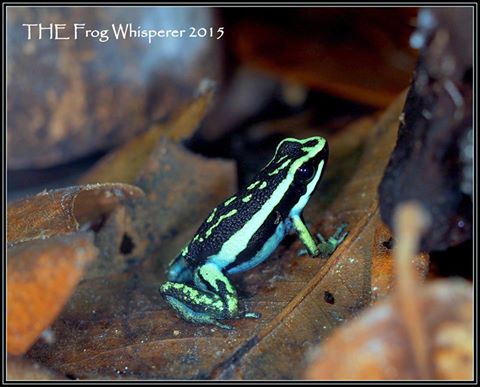
Ameerega bassleri “Sisa”
Ameerega bassleri Saposoa morph (Perù)
photo by MuddyBoots Perù



Ameerega bassleri habitat
Description
Ameerega bassleri has extremely granular skin on the dorsum and dorsal surface of the hind limbs, belly and fore limbs smooth; premaxillary and maxillary teeth present; the first finger of the hands is longer than the second; the toes are devoid of membrane. Back black with green, orange, marbling or totally orange spots; they also present a complete lateral strip of green or orange color; belly black with marbling blue.
Black and yellow morph. It has a black back with a full lateral stripe and yellow dots on the back.
Chrome-green morph. The back is black, with a full lateral fringe and dots on the back of chromate-green color. Some specimens have large green-chrome spots on the back instead of points.
Diagnosis
Ameerega bassleri differs from Ameerega trivittata by presenting teeth; of Ameerega yoshina for not having the dotted back of brick red or bright red.
Size
Adult males are in a range of 32-39 mm of snout-cloaca length and females with a measurement of 35-42 mm larger than males.
Sexual dimorphism
Sexual dimorphism is exhibited only by males being slightly smaller than females.
Call
Video by Raymond Coderre
Natural history
Ameerega bassleri is a diurnal species. They can be seen in small streams and streams in the montane forests; but they can also be distributed at lower altitudes, but they are not very abundant because they are restricted around currents of water where there is cold and humidity, whereas Ameerega trivittata is much more adapted to this forest of hotter lowlands. That is why males distributed at higher altitudes tend to deposit their tadpoles in small ditches or stagnant waters because of cold temperatures, whereas males distributed at lower altitudes tend to transport and deposit their tadpoles in streams, since their tadpoles need temperatures of 17 to 22 degrees Celsius.
Geografic distribution
Ameerega bassleri is distributed in the central and northern area of the San Martin region in Peru at an elevation of 500 to 1400 meters above sea level.
Conservation Status
NT – Near Threatened
Note
The chrome green population is almost collapsed after intensive illegal collecting campaigns of smugglers. In 2009, Ameerega pepperi and Ameerega yoshina were separated from Ameerega bassleri(Brown, J. L., Twomey, E. 2009).
References
amphibiaweb.org
dendrobase.de
dendrobates.org
iucnredlist.org
Brown, J. L., Twomey, E. 2009. Complicated histories: three new species of poison frogs of the genus Ameerega (Anura: Dendrobatidae) from north-central Peru. Zootaxa 2049: 1-38. PDF
Frost, D. R., Grant, T., Faivovich, J., Bain, R., Günther, A. C., Haas, A., Haddad, C. F., de Sá, R., Donnellan, S. C., Raxworthy, C. J., Wilkinson, M., Channing, A., Campbell, J. A., Blotto, B. L., Moler, P., Drewes, R. C., Nussbaum, R. A., Lynch, J. D., Green, D. y Wheeler, W. C. 2006. The amphibian tree of life. Bulletin of the American Museum of Natural History 297:370. PDF
Melin, D. E. 1941. Contributions to the knowledge of the Amphibia of South America. Göteborgs Kungl. Vetenskaps-och Vitterhets-samhälles. Handlingar. Serien B, Matematiska och Naturvetenskapliga Skrifter 1: 1-71. PDF
Silverstone, PH. 1976. A revision of the poison-arrow frogs of the genus Phyllobates Bibron in Sagra (Family: Dendrobatidae). Natural History Museum of Los Angeles County 27: 1-50. PDF
Twomey, E., Morales, V., Summers, K. 2008. Evaluating condition-specific and asymmetric competition in a species-distribution context. Oikos 117: 1175-1184. PDF


